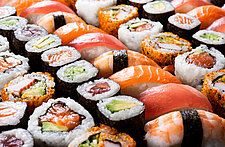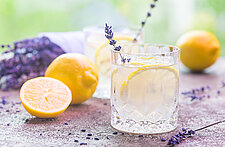 By Emmanuel Laroche VP Marketing and Consumer Insights, Symrise NA
By Emmanuel Laroche VP Marketing and Consumer Insights, Symrise NA
There is no question, craft foods and beverages are popular. From the increase of “small batches”, “homemade” products, niche brands in specialty shops to major brands in grocery stores, craft is everywhere.
But what does craft in food mean? Does it mean keeping traditions alive by going beyond the mass-produced products? Does craft also mean natural? Do crafted products need to have authentic and locally grown ingredients?
Craft is a multi-dimensional concept that neither consumers nor experts define in a singular way. However, it clearly encompasses themes around tradition, innovation, personality and intentionality. Craft food and beverages sit between tradition and innovation – it combines both to enable a sense of discovery to consumers.
CLICK HERE to subscribe to weekly updates from in-sight!
Craft food looks and feels craft – it has the right set of product attributes in place to support its story. Craft products need to look and feel right while possessing honest intentionality and a positive brand personality to truly convince consumers that they are craft. Finally, manufacturers need to have the right set of products attributes in place to come across as craft.
Craft food has personality - it shows consumers the edgy elements and human nature of the product. Consumers often describe craft and artisan with character traits, showing there’s a human side to craft products. They are not only characterized by functional attributes but also by personality; the personality of the craftsman. Craft food and beverages also have a purpose – they communicate a genuine and honest message to consumers.
They are seen to deliver against three different dimensions of personal needs: physical, emotional and psychological.
Let’s review five dimensions important for craft product positioning:
1. Wholesomeness: provide the body with the right substances to maintain a good health condition. “I think that since crafted foods are made with all natural or organic materials, they promote good health.” said Ellen from Chicago.
2. Thrill: feelings of excitement and pleasure caused by new discoveries. “People come to the store to take a little bit of a risk: consumers want to try new things.”
3. Cherish: comforting feeling when given a moment of attention and love. “Craft is the feeling that something is made by a human being with intense passion, love and obsession.”
4. Self-reward: ‘a treat’ – a fair return for good behavior. The benefits of craft food and drinks are the fact that they are healthy for you and they make you feel better, because you treat your body right and your are helping people that help you.” said Erik in Portland.
5. Self-esteem: pride and confidence feelings caused by self-satisfaction. If it is something local to the area, I like the feeling of pride/home I get from consuming it.” said Anna from Austin.
 Craft food and beverages also bring people with shared interests together – creating new experiences and promoting togetherness. A chance to bond; the social side of craft makes the act of consuming craft more fun and memorable.
Craft food and beverages also bring people with shared interests together – creating new experiences and promoting togetherness. A chance to bond; the social side of craft makes the act of consuming craft more fun and memorable.
Craft products encourage the act of sharing and exchanging information with others – sparking new conversations. Learning about ‘cool’ new craft products from others encourages consumers to try them.
CLICK HERE to view my last article: A 7 Step Solution for the Most Refreshing Beverages
Craft food and beverages reinforce the human need to belong to a group or community by offering mechanisms to support and engage with others. There is a sense of belonging to a wider movement which transcends the products themselves.
Ingredient-related drivers (e.g. ingredients, flavors and process) appear to be more determinant for craft as they are key product differentiators answering both physical and emotional needs. The other drivers (e.g. availability, provenance and packaging) also play an important role shaping the craft perception reflecting that craft is driven by a combination of attributes.
Carefully chosen ingredients
Ingredients shape a holistic view of craft as more natural and fresh ingredients are seen as a key indicator of small scale production and locally sourced produce. Craft products are felt to be trustworthy, authentic and transparent this is often communicated through the presence of real and pure ingredients.
Bold flavors
Craft flavors are distinctive from the mainstream because they are bolder and more intense. This flavor intensity creates a consumer belief that craft is not afraid to push limits, be different and stand for something more. Unusual pairings of contrasting flavors are seen as very ‘craft’, it signals a passion for the unexplored and thoughtfulness behind the product.
Handmade process
The way in which craft products are made has real emotional resonance for the majority of consumers; they view craft as made with care using specialist skills & knowledge. There is a synthesis between tradition and innovation, consumers expect traditional methods to be preferred to modern manufacturing but also see innovative and niche craftsmanship as a craft quality.
Exclusive and scarce
Craft products are seen as special and this partly arises from a sense of exclusivity because of limited availability. The higher quality of natural ingredients and small batch process means that the majority assume a craft product will have limited availability, if it is being authentic to ingredient freshness and process time.
Provenance
The provenance of craft establishes its authenticity as a craft product by giving a rounded account of the origins of both the emotional dimensions (i.e. Inspiration) and physical dimensions (i.e. locally grown ingredients).
Craft delivers a sense of respect – for the product, but also for oneself (physically and emotionally) and for the wider ‘community’ and environment.

Symrise can help you position your brand in the craft artisanal space!
Symrise North America has conducted an in-depth research with Millennials around the country to:
1. Understand the meaning of ‘craft’
2. Identify the key drivers of the concept of ‘craft’ in food and beverage
3. Understand the relevance and perceptions of craft across a spectrum of key food and beverage categories
4. Uncover opportunities for innovation
Contact your Symrise Account Manager or click here to request more information.




